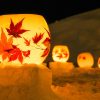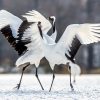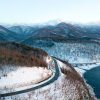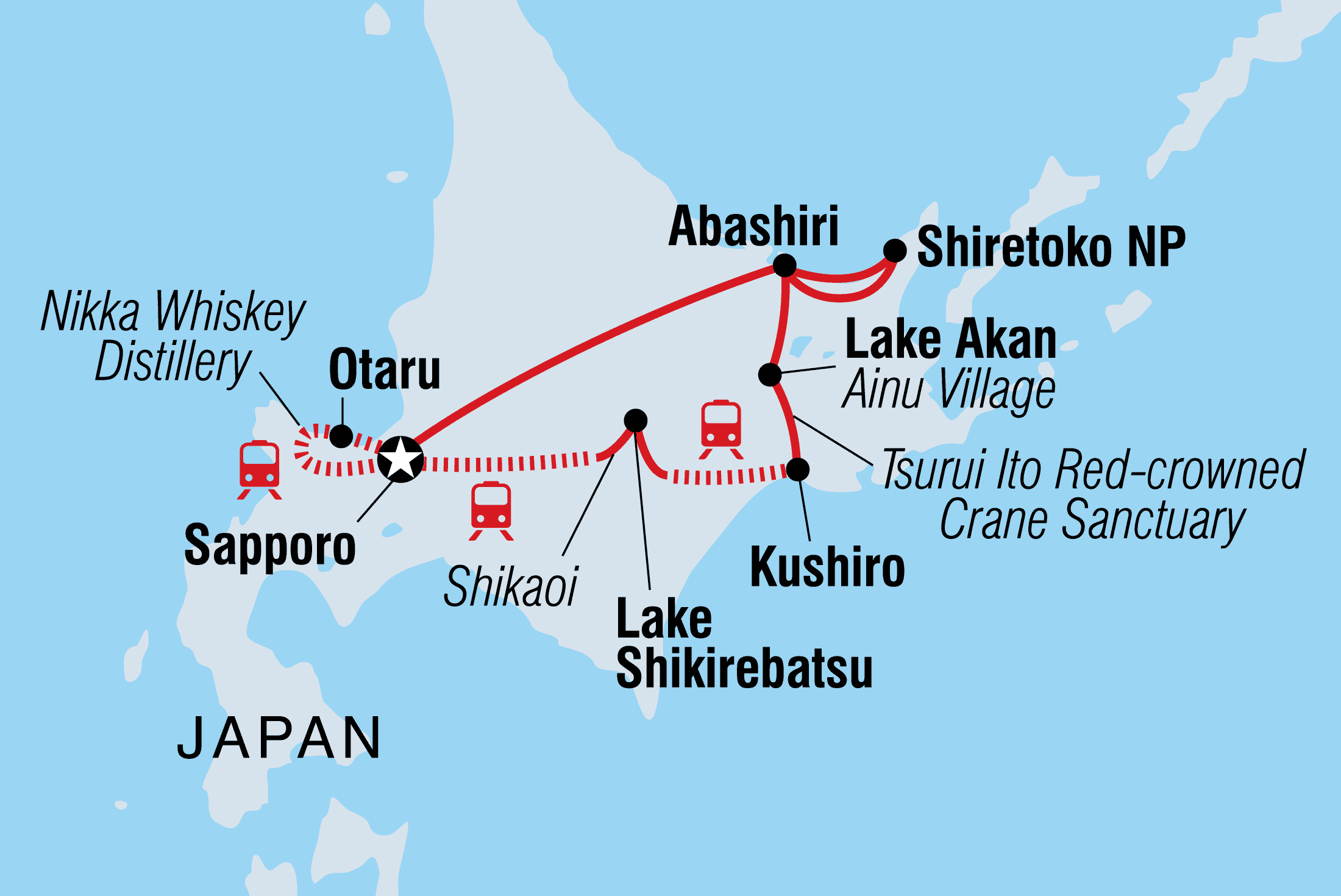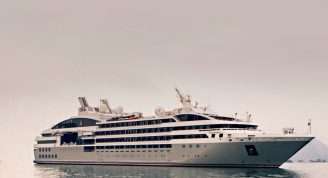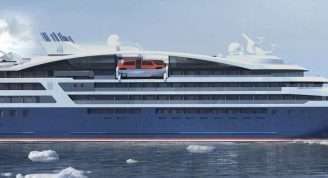Description
Say Hokk-hi-do to Japan’s northernmost main island on a 10-day winter exploration of its natural beauty, rich cultural heritage and fabulous festivities. Beginning in Sapporo, discover the crisp notes of whisky at a distillery in Yoichi, have the chance to participate in an age-old tradition of dog-sledding in Shikaoi, see the renowned Japanese crane in Lake Akan, explore the depths of the Shiretoko National Park and possibly float through drift ice in Abashiri. With ryokans to stay in, local Ainu people to meet, traditional onsen to soak in and Hokkaido local drinks to warm you up to check out, you’ll be seeing Japan in a whole new light on this winter adventure.
- If your timing is right, you’ll marvel in the lights and wonder of the Snow Light Path festival in Otaru – one of the region’s oldest festivals to celebrate the winter wonderland that Hokkaido is.
- Escape the icy conditions by relaxing with a soak in a steaming onsen – a traditional Japanese hot spring.
- Discover the Ainu people at a village visit in Lake Akan. This indigenous community of Hokkaido have a rich culture and long-withstanding traditions which you will be able to learn about on your visit.
- Go in search for a quintessential image of Japan – the symbolic red-crested crane. These elegant birds inhabit the Kushiro region, and with a knowledgeable guide on hand, you’ll see them in all their glory.
- Dodge the winter crowds with an unforgettable journey to World Heritage-listed Shiretoko National Park, with a guided tour through the forest in search of Hokkaido’s endangered species.






